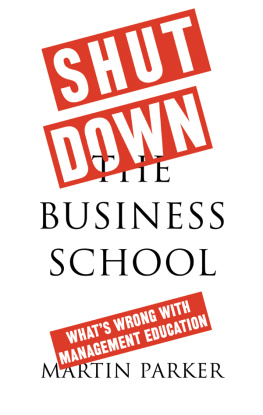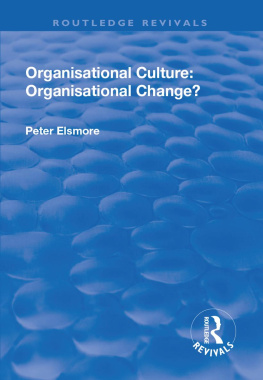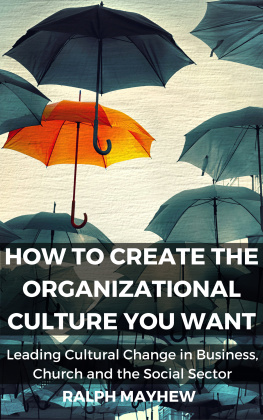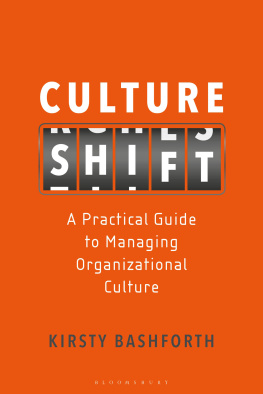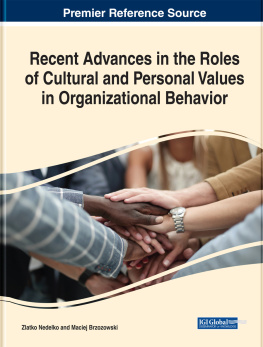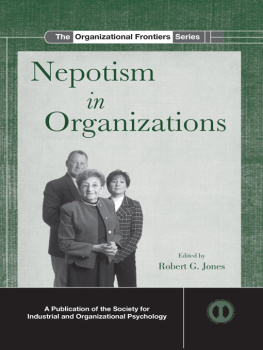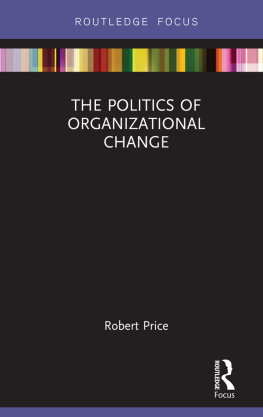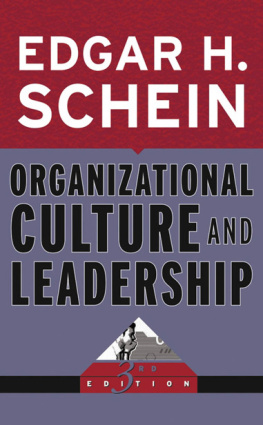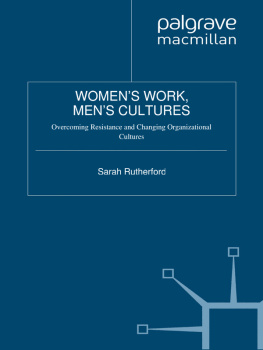Organizational Culture and Identity
Organizational Culture and Identity
Unity and Division at Work
Martin Parker

Martin Parker 2000
First published 2000
All rights reserved. No part of this publication may be reproduced, stored in a retrieval system, transmitted or utilized in any form or by any means, electronic, mechanical, photocopying, recording or otherwise, without permission in writing from the Publishers.

| SAGE Publications Ltd 6 Bonhill Street London EC2A 4PU SAGE Publications Inc. 2455 Teller Road Thousand Oaks, California 91320 Sage Publications India Pvt Ltd 32, M-Block Market Greater Kailash - I New Delhi 110 048 |
British Library Cataloguing in Publication data
A catalogue record for this book is
available from the British Library
ISBN 0 7619 5242 X
ISBN 0 7619 5243 8 (pbk)
Library of Congress catalog card number 99 75634
Typeset by Myrene L. McFee
Printed in Great Britain by Athenaeum Press, Gateshead
Contents
Preface and Acknowledgements
The preface to a book like this is usually used as a space for the author to demonstrate the humility that is all too lacking in the rest of the text. Who am I to break with such an honourable tradition? So, here it is some organizations, some identity and some debts.
This book began its life in 1988 when I became a research assistant registered for a PhD in the Sociology Department at North Staffordshire Polytechnic in Stoke-on-Trent. By the time it was finished 10 years later the Polytechnic was a University and I had moved a few miles up the road to another University. So, the first people to thank are Tony Charles and Mike Dent who got the grant to study technological change in organizations in the first place. The final version of the PhD benefited greatly from Mike Dents supervision, as well as David Jarys comments. When I moved to Keele to work in the Department of Management and Centre for Social Theory and Technology in 1995 I found an atmosphere that was incredibly supportive for writing and research. Without that space and continuing dialogue this book would certainly not have emerged to have the shape that it does. Many people within the three organizations that form the empirical material for this book gave me their time and trust. I cant name them and they may never read this but I am grateful that they were willing to spend so much time talking to me. At Sage I owe a debt to Sue Jones, who commissioned this book, and to Rosemary Nixon for her supportive comments. Thanks also to Myrene McFee for her production skills, and for doing the index. My parents, Geoffrey and Brenda, will know why I became an academic in the first place. Thank you both for encouraging me to think for myself. I also want to say a big hello to Jude, Ben, Max, Zoe and Spike. Not to thank, or to apologize. Just to say hello and hope that it makes you all smile.
The usual disclaimer doesnt apply. All of the above mentioned are equally responsible for the views in this book. How else could anyone write anything?
Finally, it is worth noting that some of the material in this book has already appeared elsewhere in different forms. The original PhD was entitled Organisational Culture in Context and was submitted to Staffordshire University in 1995. Accounts of two of the case studies appear as Working Together, Working Apart: Management Culture in a Manufacturing Firm in Sociological Review (1995) 43/3: 518-47 and Managers, Doctors and Culture: Changing an English Health District in Administration and Society (1996) 28/3: 335-61 (with Mike Dent). A review of part of the argument can be found as Dividing Organizations and Multiplying Identities in Ideas of Difference: Social Ordering and the Labour of Division, edited by Kevin Hetherington and Rolland Munro, Oxford: Blackwell (1997).
Martin Parker
Introduction
The final implementation tool available to top managers is organizational culture. New research has discovered how culture fits together with other elements. The reason culture is important is because top management can directly influence culture through activities and symbols. (Daft, 1986: 486)
Culture is one of the two or three most complicated words in the English language. (Raymond Williams, 1983: 87)
Do organizations shape the identities of their members? And, if they do, can (and should) managers seek to influence these identities in order to manage more effectively? From the early 1980s onwards there was an explosion of enthusiasm for writing about and managing something called organizational culture. The central assumption behind this rise of interest seemed to be that a hard scientific management of institutions could and should be augmented with, or even displaced by, an approach that stressed a softer, more humane understanding of human values and culture. The time study engineer was to be replaced by the organizational anthropologist. My main argument in this book is that there are important insights to be gained from applying the term culture to organizations, but that much of the writing that brought the term to a wider public has been most unreflexive about its core assumptions. There will be two major strands to the book. The first is to explore the history of ideas about culture in organizations and to explain why the term has been invoked with such enthusiasm over the last 15 years or so. The second is to use some ideas and some stories about three organizations in order to put forward a rather different way of thinking about organizations and culture. To put it simply, I suggest that organizational cultures should be seen as fragmented unities in which members identify themselves as collective at some times and divided at others. Further, I argue that organizational culture is a term which should be understood as involving both the everyday understandings of members and the more general features of the sector, state and society of which the organization is a part both the micro and the macro if you like. Thinking about organizational culture therefore involves recognizing the inseparability of binaries together and apart, general and unique, structures and agents, organizations and identities in sum, organizational culture both as a constraint and as an everyday accomplishment.
Yet for some, as the extremely bullish epigraph from Daft indicates, culturalism was the answer to a managers prayer a way to solve the problems of their organization by manipulating the beliefs, rituals and language of their employees. In this book I will be critical of this kind of strong claim for the management of culture. I will try to show that any notion that culture is manageable in the sense that Daft suggests is to treat culture merely as a form of normative glue that can be applied or removed as the executive desires. The distinction between organizational and corporate culture is quite relevant in this regard. Some authors have suggested that the prefix corporate should be reserved for management engineered programmes of change, with organizational referring to the culture which grows or emerges within the organization (Linstead and Grafton-Small, 1992: 333; Anthony, 1994). I will usually employ the latter term in this book for two reasons. Firstly, organization is a more inclusive term than corporation not all organizations are corporations. Secondly because, as I shall suggest in the final chapter and as the Raymond Williams epigraph suggests, the distinction between an imposed corporate culture and an organic organizational one is by no means clear. Being critical of the former whilst romanticizing the latter seems to me a rather unhelpful dualism if we dont really understand how they might differ in the first place.


